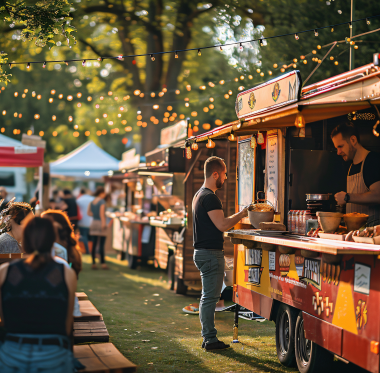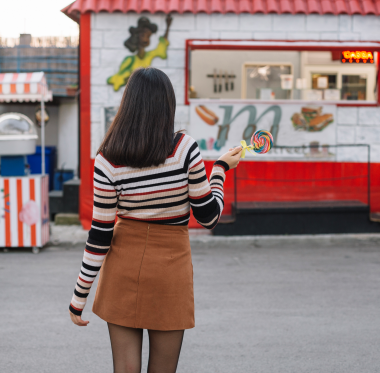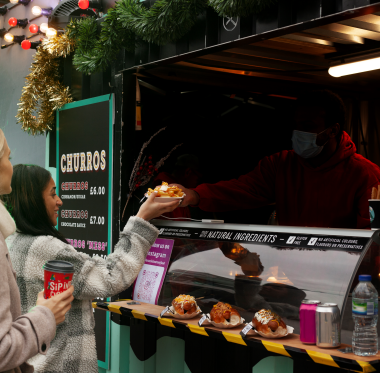Designing a pop-up kiosk involves creating a flexible, portable, and attractive setup that can be easily transported and quickly assembled. This guide outlines the key steps and considerations for developing a successful pop-up kiosk:
1. Purpose and Functionality
- Primary Use: Determine the primary function of the kiosk, such as retail sales, food and beverage service, information dissemination, or product promotion.
- Target Audience: Identify the target demographic and design the kiosk to meet their needs and preferences.
2. Design and Layout
- Modular Design: Use a modular design that allows for easy assembly, disassembly, and reconfiguration. This enables adaptability to different spaces and purposes.
- Compact and Portable: Ensure the kiosk is lightweight and portable. Use materials like aluminum, plastic, and lightweight wood for easy transport.
- Efficient Layout: Plan an efficient layout that maximizes the use of limited space. Include areas for display, storage, and customer interaction.
3. Materials and Construction
- Durability: Choose durable materials that can withstand frequent setup and takedown, as well as varying weather conditions if used outdoors.
- Ease of Assembly: Design the kiosk for quick and easy assembly. Use interlocking components, snap-together pieces, and minimal tools.
- Aesthetics: Ensure the design is visually appealing and aligns with your brand identity. Use attractive finishes, branded colors, and eye-catching graphics.
4. Branding and Signage
- Brand Visibility: Incorporate clear and prominent branding to attract attention and communicate your brand message. Use logos, colors, and graphics consistently.
- Signage: Include signs that are easy to read from a distance, such as banners, posters, and digital screens. Ensure signage is interchangeable for different events or promotions.
5. Power and Connectivity
- Power Supply: Plan for power needs, including lighting, equipment, and digital displays. Use portable power sources like battery packs or generators if necessary.
- Connectivity: Ensure reliable internet connectivity for transactions, digital displays, and any interactive elements. Use mobile hotspots or portable Wi-Fi devices.
6. Lighting and Visual Appeal
- Lighting: Use adequate lighting to highlight products and create an inviting atmosphere. Consider LED lights for energy efficiency and portability.
- Visual Merchandising: Arrange products attractively to draw attention and encourage browsing. Use shelving, racks, and display cases to showcase items effectively.
7. Customer Experience
- Interaction Space: Design the kiosk with a clear area for customer interaction, ensuring it’s comfortable and accessible.
- User-Friendly: Ensure the layout is intuitive and easy for customers to navigate. Include clear signage and product information.
- Engagement: Incorporate interactive elements like touch screens, product demos, and samples to engage customers and enhance their experience.
8. Security and Safety
- Secure Storage: Include secure storage areas for inventory and valuables, such as lockable cabinets or drawers.
- Safety Measures: Ensure the kiosk is stable and safe for both staff and customers. Use non-slip surfaces and secure any loose components.
- Surveillance: Consider portable security measures, like cameras or alarm systems, to protect the kiosk and its contents.
9. Compliance and Permits
- Local Regulations: Ensure compliance with local regulations and obtain any necessary permits or licenses for operating the kiosk.
- Health and Safety: Adhere to health and safety guidelines, especially if serving food or beverages. Include hygiene facilities like hand sanitizers or portable sinks.
10. Sustainability
- Eco-Friendly Materials: Use sustainable materials and practices to minimize environmental impact. Consider reusable or recyclable components.
- Waste Management: Provide waste disposal options, including recycling bins, to manage waste effectively and sustainably.
11. Marketing and Promotion
- Pre-Event Marketing: Promote the pop-up kiosk through social media, email marketing, and local advertising to generate buzz and attract customers.
- On-Site Promotion: Use promotional materials like flyers, brochures, and discount coupons to attract and engage customers at the kiosk.
- Post-Event Follow-Up: Collect customer feedback and contact information for future promotions and engagement.
12. Flexibility and Scalability
- Adaptable Design: Ensure the kiosk design is adaptable to different locations and purposes. Modular components can be reconfigured for various setups.
- Scalability: Plan for potential expansion by incorporating scalable elements that allow for larger setups or multiple kiosks.
By considering these elements, you can create a versatile, attractive, and functional pop-up kiosk that meets your business needs and provides a positive experience for customers.



© All Copyright 2024 by Kingston Hills. Design by Designinghubworld.in


